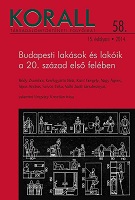"Véres övezet" – Kovács András pokoljárása, 1939–1951
"Bloodlands" The Trials and Tribulations of András Kovács between 1939 and 1951
Author(s): Krisztián UngvárySubject(s): History
Published by: KORALL Társadalomtörténeti Egyesület
Summary/Abstract: In general, autobiographies are peculiar constructs which, expressly or tacitly, are created with an assumed customer in mind. Biographical materials prepared for the communist state security speak as much about the party’s expectations as the actual living conditions of their subjects. This study looks at historical events which decided the fate of millions in this period through the lens of the story of one individual. The protagonist, András Kovács, was born a Hungarian Jew in the Lower Carpathian region, which doubly destined him to a minority existence. From 1939 onwards, his Jewish origin forced him into hiding and Kovács remained unable to escape his fate even though he assumed new identities repeatedly. Even though he tried his level best to integrate into the communist regime, his vicissitudes and the series of new identities he was forced to assume continued after 1945. Kovács’ story is far from unique in this period. The primary source for this study is the recruitment dossier of the state security, which contains documents of special value as a historical source. Since these documents reveal as much about their creators as their subjects, individual source criticism for each separate case is of crucial importance. American historian Timothy Snyder’s Bloodlands, an influential, albeit academically often criticised, book on Eastern European history describes the region in the light of the destruction by totalitarian dictatorships. This present study may also serve as a contribution to the debate that this controversial book elicited in scholarly circles.
Journal: Korall - Társadalomtörténeti folyóirat
- Issue Year: 2014
- Issue No: 58
- Page Range: 167-185
- Page Count: 19
- Language: Hungarian

